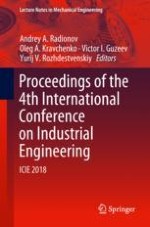2019 | OriginalPaper | Buchkapitel
Physical and Mathematical Model of the Process of Face Grinding of Rails with Abrasive Wheels Operating at Speed of 50 m/s
verfasst von : T. N. Orlova, I. Y. Orlov, N. S. Hvan
Erschienen in: Proceedings of the 4th International Conference on Industrial Engineering
Aktivieren Sie unsere intelligente Suche, um passende Fachinhalte oder Patente zu finden.
Wählen Sie Textabschnitte aus um mit Künstlicher Intelligenz passenden Patente zu finden. powered by
Markieren Sie Textabschnitte, um KI-gestützt weitere passende Inhalte zu finden. powered by
